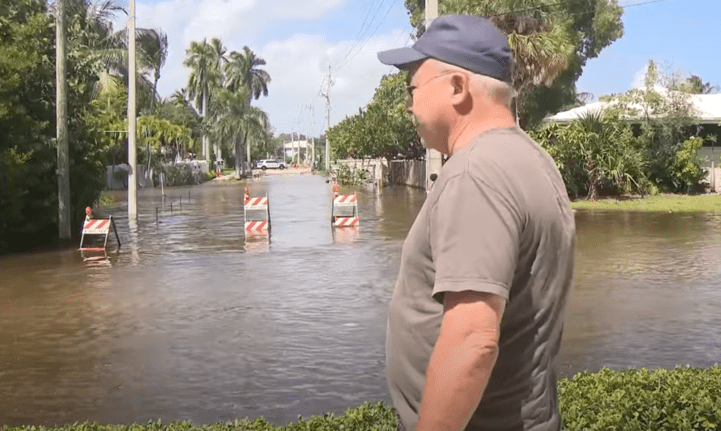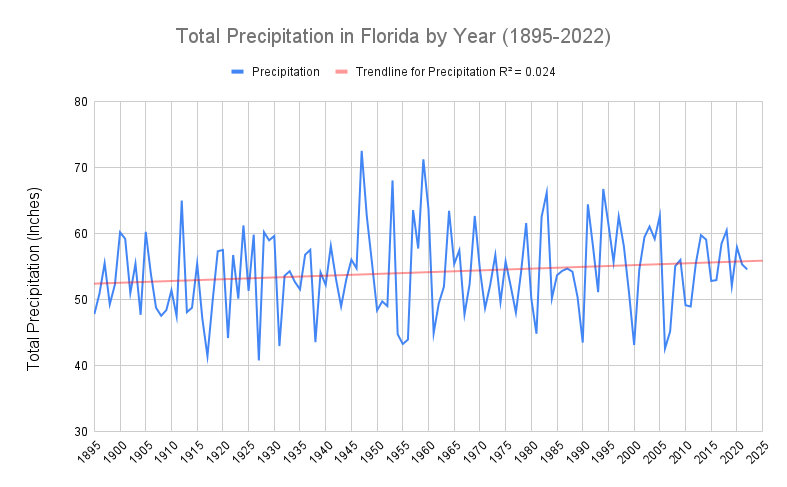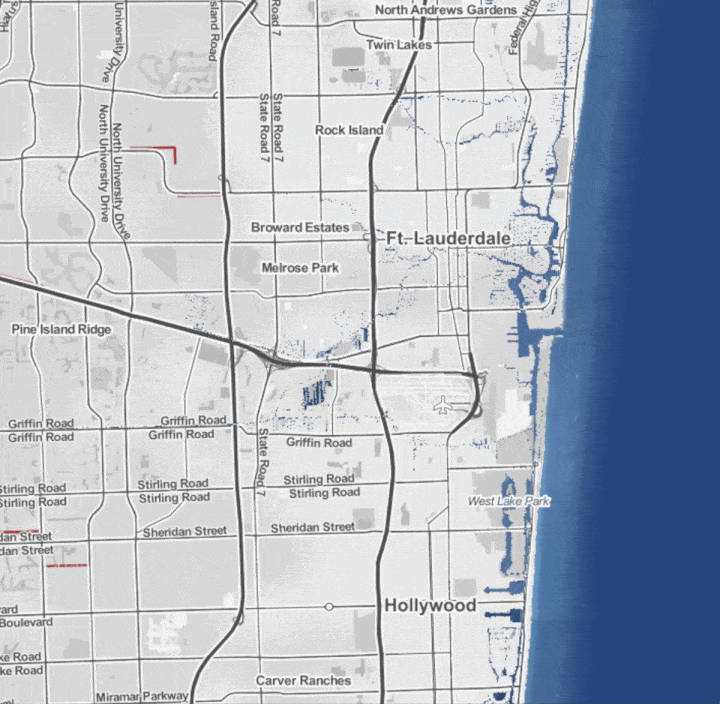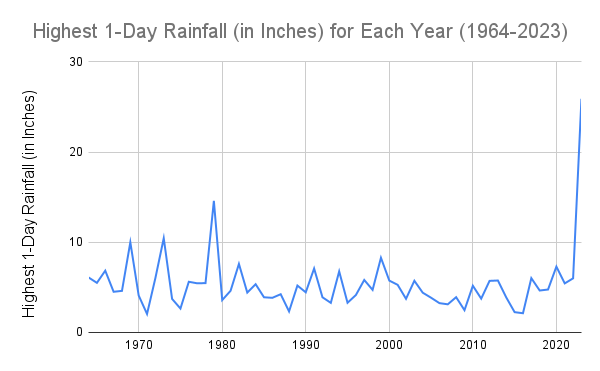Whether you want to start a business, build an audience on social media, start a blog, or create a marketing campaign, your first task is exactly the same: choose a “niche”.

A niche is just a group of people or businesses who share a set of common interests or problems. More specifically, your niche is your set of target customers, and your niche’s common problems are what you are going to talk about and sell solutions to solve.
When choosing a niche, you want something that is both large but also sufficiently homogeneous. For example, the niche consisting of “all adults living in California” is a relatively large niche (over 30 million adults who collectively brought in over $3 trillion of personal income in 2022). However, there is essentially nothing that all these people have in common beyond the fact that they all live in California. You might be able to create a YouTube channel about general news in California (California laws & elections, weather, etc) but that’s about it.
Now let’s contrast the niche of all people in California with the niche of all small businesses in America. According to the U.S. chamber of commerce, there are over 33 million small businesses in America as of April 2023. In 2022, those businesses contributed over $11 trillion to U.S. GDP, and every single one of those businesses has an ongoing LEGAL AND PRACTICAL REQUIREMENT for bookkeeping & tax filing. That means the niche of bookkeeping & taxes for small businesses in America offers much more opportunity than the niche of general news for Californians. That’s why Quickbooks has over 26 million users and generates billions of dollars in revenue each year. It’s also why there are dozens of podcasts talking about how to build a bookkeeping business.
Rule of Thumb: Small businesses are the low-hanging fruit niches. They are easier to sell to than consumers, take less time to sell to than large businesses, and have money to spend on anything that can help them make more money or lose less money.
That doesn’t necessarily mean you should target ALL small businesses like Quickbooks does. Instead, you’ll find it easiest to get early customers if you find a more specific (but still large-ish) subset of small businesses to focus on (a niche within a niche).
In the table below, I list 105 examples of high-value small business niches. Each niche listed is a multi-billion dollar niche yet is homogeneous enough that all businesses in the niche share some common problems. However, if you want to narrow your niche even further (called “niching down”) you can intersect any of the niches below with a geographic area (e.g. instead of targeting “pharmacies” you might only target “pharmacies in New York State” or even “pharmacies in Manhattan”).
Alternatively, you can niche down from any of the examples below by focusing on businesses within the niche which share even more commonality. For example, instead of targeting all veterinarian businesses, you could target exotic pet veterinarian businesses.
| Business Type | Industry | Number of Unique Companies in the U.S. | Total Annual Payroll | |
| 1 | Veterinarian businesses NAICS 541940 | Specialized Professional Services | 27,943 | $16 Billion |
| 2 | Pharmacies and drug stores NAICS 446110 | Retail | 19,486 | $27 Billion |
| 3 | Drugs and druggists’ sundries merchant wholesalers NAICS 424210 | Wholesale | 7,207 | $39 Billion |
| 4 | Other chemical and allied products merchant wholesalers NAICS 424690 | Wholesale | 5,804 | $11 Billion |
| 5 | Physicians’ offices (excluding mental health specialists) NAICS 621111 | Healthcare | 157,663 | $235 Billion |
| 6 | Dentists’ offices NAICS 621210 | Healthcare | 124,384 | $50 Billion |
| 7 | Physical, occupational, and speech therapist companies NAICS 621340 | Healthcare | 28,366 | $18 Billion |
| 8 | Outpatient mental health & substance abuse centers NAICS 621420 | Healthcare | 7,215 | $12 Billion |
| 9 | “All other outpatient care centers” NAICS 621498 Excludes: – Family planning centers – Outpatient mental health & substance abuse centers – HMO medical centers – kidney dialysis centers – freestanding ambulatory surgical and emergency centers Includes (non-exhaustive list of examples): – Outpatient biofeedback centers – Outpatient pain therapy centers – Outpatient community health centers – Outpatient sleep disorder clinics – Outpatient infusion therapy centers – Freestanding birth centers – Centers/clinics with health practitioners from more than one industry practicing | Healthcare | 6,258 | $28 Billion |
| 10 | Medical, dental, and hospital equipment and supplies merchant wholesalers NAICS 423450 | Wholesale | 8,156 | $29 Billion |
| 11 | Law firms NAICS 541110 | Specialized Professional Services | 161,132 | $110 Billion |
| 12 | Insurance agencies and brokerages NAICS 524210 | Insurance | 122,198 | $54 Billion |
| 13 | Real estate agencies & brokerages NAICS 531210 | Real Estate | 120,942 | $24 Billion |
| 14 | Residential remodeling companies NAICS 236118 | Real Estate | 114,459 | $18 Billion |
| 15 | Landscaping companies NAICS 561730 | Maintenance Services | 105,954 | $30 Billion |
| 16 | Janitorial service companies NAICS 561720 | Maintenance Services | 58,011 | $25 Billion |
| 17 | Family clothing stores NAICS 448140 | Retail | 6,710 | $13 Billion |
| 18 | Stand alone convenience stores NAICS 445120 | Retail | 27,998 | $2.7 Billion |
| 19 | Gasoline stations with convenience stores NAICS 447110 | Retail | 56,460 | $18 Billion |
| 20 | Supermarkets and other grocery (except convenience) stores NAICS 445110 | Retail | 38,753 | $65 Billion |
| 21 | Grocery stores NAICS 4451 | Retail | 66,709 | $68 Billion |
| 22 | Health & personal care stores NAICS 4461 | Retail | 43,613 | $37 Billion |
| 23 | Industrial machinery and equipment merchant wholesalers NAICS 423830 | Wholesale | 21,231 | $30 Billion |
| 24 | Computer and computer peripheral equipment and software merchant wholesalers NAICS 423430 | Wholesale | 5,517 | $20 Billion |
| 25 | Other electronic parts and equipment merchant wholesalers NAICS 423690 | Wholesale | 8,474 | $34 Billion |
| 26 | Hardware stores NAICS 444130 | Retail | 9,476 | $4.1 Billion |
| 27 | Other building material dealers NAICS 444190 Includes: – lumber stores – glass stores – fencing stores – plumbing supplies stores – electrical supplies stores – kitchen and bath cabinet & countertop stores | Retail | 21,876 | $14 Billion |
| 28 | Couriers and express delivery service companies NAICS 492110 | Mail & Freight Transportation | 4,414 | $32 Billion |
| 29 | Freight transportation arrangement companies NAICS 488510 | Mail & Freight Transportation | 14,999 | $18 Billion |
| 30 | Long-distance general freight trucking NAICS 484121 | Mail & Freight Transportation | 38,733 | $27 Billion |
| 31 | Long-distance specialized freight (except used goods) trucking NAICS 484230 | Mail & Freight Transportation | 9,609 | $10 Billion |
| 32 | Local general freight trucking NAICS 484110 | Mail & Freight Transportation | 32,883 | $10 Billion |
| 33 | Local specialized freight (except used goods) trucking NAICS 484220 | Mail & Freight Transportation | 29,980 | $12 Billion |
| 34 | Freight trucking (total) NAICS 4841 & 4842 | Mail & Freight Transportation | 123,378 | $82 Billion |
| 35 | Office administrative services companies NAICS 561110 | Business & Professional Services | 31,298 | $36 Billion |
| 36 | Administrative management and general management consulting companies NAICS 541611 | Consulting & Business Services | 80,226 | $70 Billion |
| 37 | Construction companies focused on power and communication lines & related structures NAICS 237130 | Construction | 5,329 | $19 Billion |
| 38 | “Other” scientific and technical consulting businesses NAICS 541690 | Consulting & Business Services | 25,255 | $13 Billion |
| 39 | “All Other” professional, scientific, and technical services businesses | Consulting & Business Services | 19,397 | $8.2 Billion |
| 40 | Marketing consulting service companies NAICS 541219 | Consulting & Business Services | 40,946 | $17 Billion |
| 41 | Advertising agencies NAICS 541810 | Consulting & Business Services | 12,545 | $18 Billion |
| 42 | PR agencies NAICS 541820 | Consulting & Business Services | 7,917 | $5.9 Billion |
| 43 | Investment advisers NAICS 523930 | Finance | 20,213 | $14 Billion |
| 44 | Portfolio management companies NAICS 523920 | Finance | 24,128 | $89 Billion |
| 45 | Offices of other holding companies NAICS 551112 *These are typically corporations or LLCs that hold influential security interests of other companies but don’t actively participate in those other companies. Private equity fund management companies would would be the typical example. | Finance | 6,019 | $11 Billion |
| 46 | Miscellaneous financial contract intermediation companies NAICS 523910 These are businesses that primarily buy and sell financial contracts for their own account (typically on a spread basis), and does not include investment banks, securities dealers, or commodity contract dealers. Typical examples of businesses in this category are: – Investment clubs – Tax lien dealing companies (i.e. they act as a principal in dealing tax liens to investors) – Mineral royalties or leases dealers – Proprietary venture capital investment companies (i.e. not managing a fund) – Mortgage dealers – Prop trading companies – Viatical settlement companies | Finance | 8,029 | $10 Billion |
| 47 | Nondepository credit intermediation companies NAICS 5222 These include credit card issuing companies, sales financing companies, and other nondepository credit intermediation companies | Finance | 14,067 | $59 Billion |
| 48 | Activities related to credit intermediation NAICS 5223 | Finance | 13,761 | $31 Billion |
| 49 | Insurance carriers NAICS 5241 | Insurance | 5,162 | $150 Billion |
| 50 | Commercial banks NAICS 522110 | Finance | 4,473 | $138 Billion |
| 51 | Real estate credit companies NAICS 522292 | Finance | 3,400 | $28 Billion |
| 52 | Financial transaction processing, reserving, and clearinghouse businesses NAICS 522320 | Finance | 3,163 | $21 Billion |
| 53 | Third party administrators of insurance and pension funds NAICS 524292 | Finance | 2,626 | $26 Billion |
| 54 | Tax preparation companies NAICS 541213 | Finance | 17,302 | $2.3 Billion |
| 55 | CPA firms NAICS 541211 | Finance | 52,111 | $44 Billion |
| 56 | Other accounting service companies NAICS 541219 | Finance | 41,081 | $11 Billion |
| 57 | Accounting, tax prep, bookkeeping, and payroll services companies | Finance | 114,687 | $74 Billion |
| 58 | Residential building construction NAICS 2361 | Construction | 184,122 | $44 Billion |
| 59 | Electrical contractors and other wiring installation contractors NAICS 238210 | Construction | 74,649 | $59 Billion |
| 60 | Drywall and insulation contractor companies NAICS 238310 | Construction | 18,864 | $15 Billion |
| 61 | Site preparation contractor companies NAICS 238910 | Construction | 37,102 | $27 Billion |
| 62 | Poured concrete foundation and structure contractor companies NAICS 238110 | Construction | 20,947 | $14 Billion |
| 63 | General warehousing and storage companies NAICS 493110 | Real Estate | 6,034 | $41 Billion |
| 64 | Residential landlord companies NAICS 531110 | Real Estate | 52,216 | $15 Billion |
| 65 | Crude petroleum extraction companies NAICS 211120 | Mining & Extraction | 4,250 | $11 Billion |
| 66 | Coal mining companies NAICS 21211 | Mining & Extraction | 362 | $4.3 Billion |
| 67 | Gold mining companies NAICS 212221 | Mining & Extraction | 141 | $1.5 Billion |
| 68 | Crushed and broken limestone mining & quarrying companies NAICS 212312 | Mining & Extraction | 539 | $2.3 Billion |
| 69 | Sand, gravel, clay, and ceramic and refractory mineral mining companies NAICS 21232 | Mining & Extraction | 1,534 | $2.3 Billion |
| 70 | Companies that provide support activities for oil and gas operations NAICS 213112 | Mining & Extraction | 8,482 | $22 Billion |
| 71 | Wireless telecom carriers (excluding satellite carriers) NAICS 517312 | Utilities | 5,197 | $19 Billion |
| 72 | Data processing, hosting, and related services companies NAICS 518210 | Tech | 10,576 | $62 Billion |
| 73 | Custom computer programming service businesses NAICS 541511 | Consulting & Business Services | 60,772 | $96 Billion |
| 74 | Computer systems design services NAICS 541512 | Consulting & Business Services | 45,622 | $84 Billion |
| 75 | Engineering services companies NAICS 541330 | Specialized Professional Services | 45,823 | $109 Billion |
| 76 | Architecture services companies NAICS 541310 | Specialized Professional Services | 20,834 | $15 Billion |
| 77 | Commercial printing (except screen and books) companies NAICS 323111 | Other | 15,837 | $16 Billion |
| 78 | Metal service centers and other metal merchant wholesalers NAICS 423510 | Wholesale | 6,666 | $10 Billion |
| 79 | Machine shops NAICS 332710 | Specialized Professional Services | 17,679 | $13 Billion |
| 80 | Hotels and motels (excluding casino hotels) NAICS 721110 | Real Estate | 43,624 | $50 Billion |
| 81 | Fitness and recreational sports centers (e.g. gyms) NAICS 713940 | Other | 32,223 | $12 Billion |
| 82 | Nonresidential property management companies NAICS 531312 | Real Estate | 15,564 | $12 Billion |
| 83 | Residential property management companies NAICS 531311 | Real Estate | 38,089 | $22 Billion |
| 84 | Exterminating and pest control service businesses NAICS 561710 | Maintenance Services | 12,883 | $5.4 Billion |
| 85 | Security guards and patrol services companies NAICS 561612 | Maintenance Services | 6,937 | $20 Billion |
| 86 | Assisted living facilities for the elderly NAICS 623312 | Real Estate | 14,643 | $13 Billion |
| 87 | Nursing care facilities (skilled nursing facilities) NAICS 623110 | Real Estate | 9,818 | $55 Billion |
| 88 | Residential intellectual and developmental disability facilities NAICS 623210 | Real Estate | 6,734 | $16 Billion |
| 89 | Service providers for elderly and disabled people NAICS 624120 | Healthcare | 30,878 | $28 Billion |
| 90 | Home health care service companies NAICS 621610 | Healthcare | 24,619 | $48 Billion |
| 91 | Golf courses and country clubs NAICS 713910 | Real Estate | 9,393 | $9.8 Billion |
| 92 | Solid waste collection companies NAICS 562111 | Utilities | 6,620 | $13 Billion |
| 93 | Electric power distribution companies NAICS 221122 | Utilities | 1,244 | $41 Billion |
| 94 | Temporary staffing companies NAICS 561320 | HR | 14,586 | $122 Billion |
| 95 | Businesses of independent artists, writers, and performers NAICS 711510 | Media & Entertainment | 32,201 | $9.5 Billion |
| 96 | Business associations NAICS 813910 | Community | 14,967 | $9.2 Billion |
| 97 | Professional organizations NAICS 813920 | Community | 6,458 | $7.5 Billion |
| 98 | New car dealers NAICS 441110 | Retail | 17,057 | $67 Billion |
| 99 | Restaurants NAICS 722511 & 722513 | Retail | 380,726 | $194 Billion |
| 100 | Religious organizations NAICS 813110 | Community | 184,259 | $39 Billion |
| 101 | Securities brokerages NAICS 523120 | Finance | 6,487 | $47 Billion |
| 102 | Management, scientific, and technical consulting services NAICS 5416 | Consulting & Business Services | 176,784 | $126 Billion |
| 103 | HR consulting businesses NAICS 541612 | Consulting & Business Services | 6,846 | $11 Billion |
| 104 | Process, physical distribution, and logisitcs consulting businesses NAICS 541614 | Consulting & Business Services | 7,301 | $5.2 Billion |
| 105 | Environmental consulting companies NAICS 541620 | Consulting & Business Services | 8,336 | $6.7 Billion |
If you need more inspiration to find your niche, check out these 17 examples of online companies with niche markets or these 17 examples of niche finance blogs that get from 100k to 100 million visits per month.








